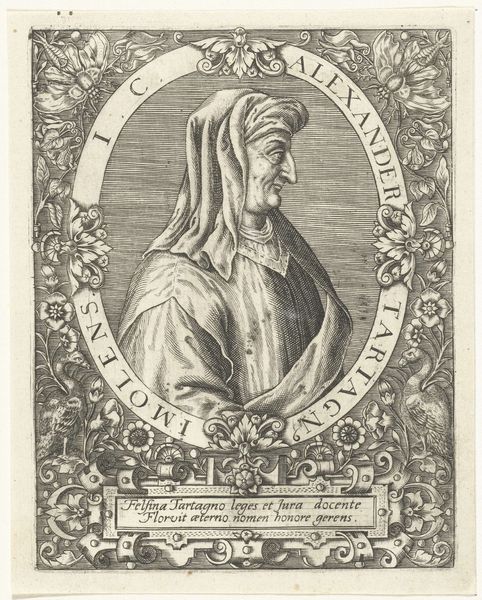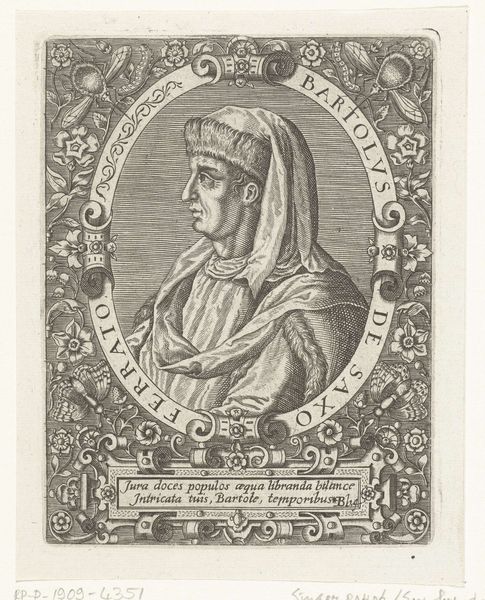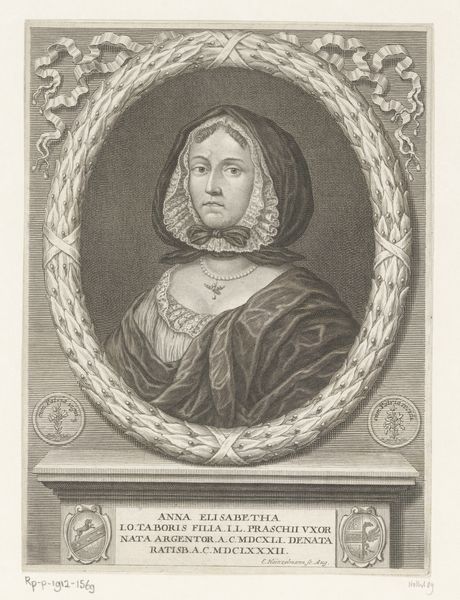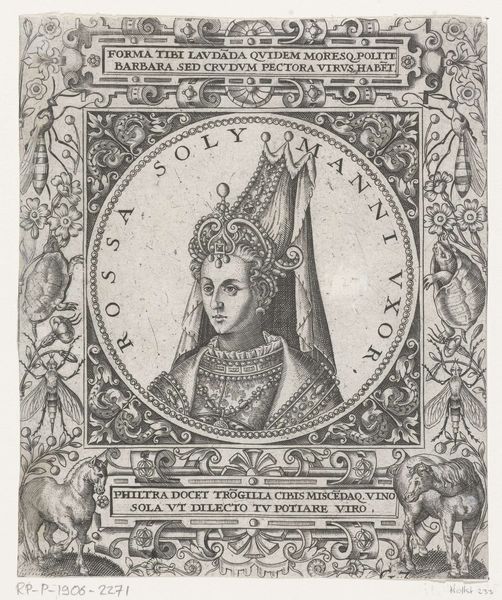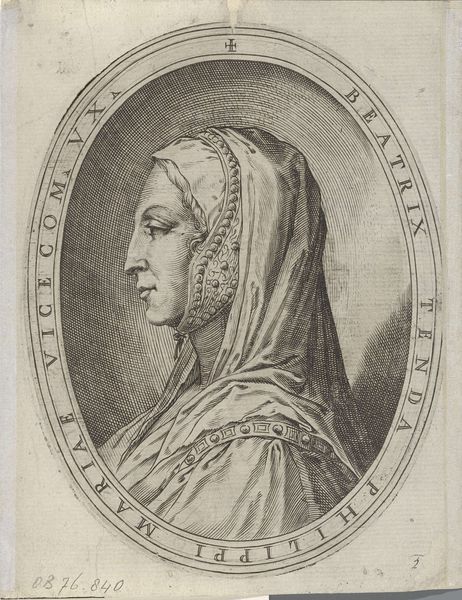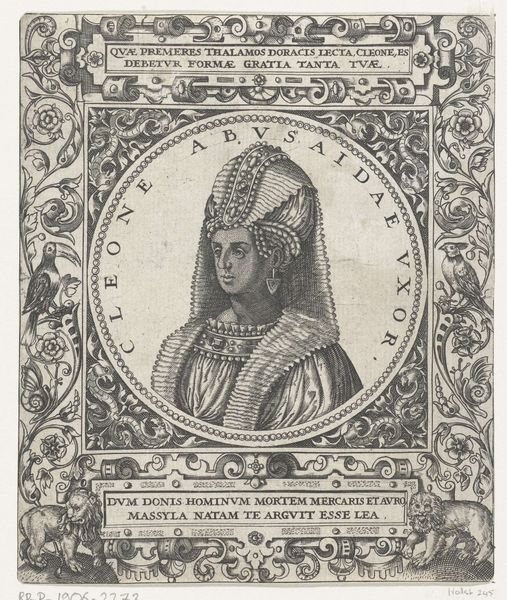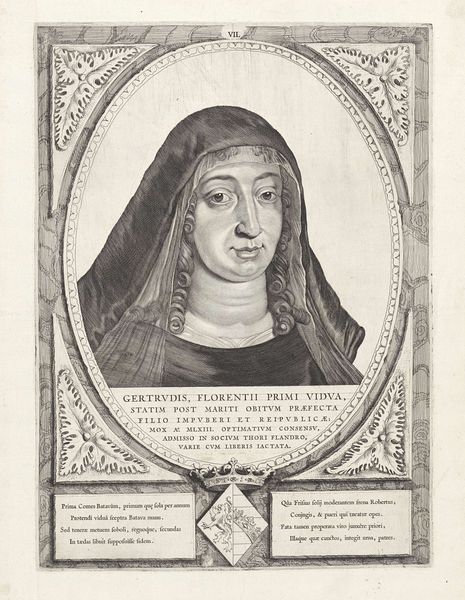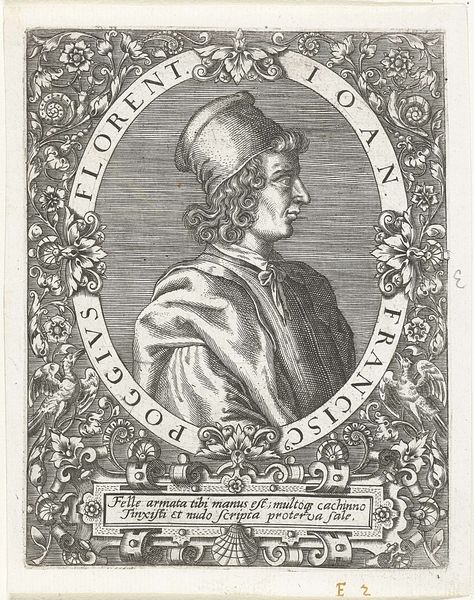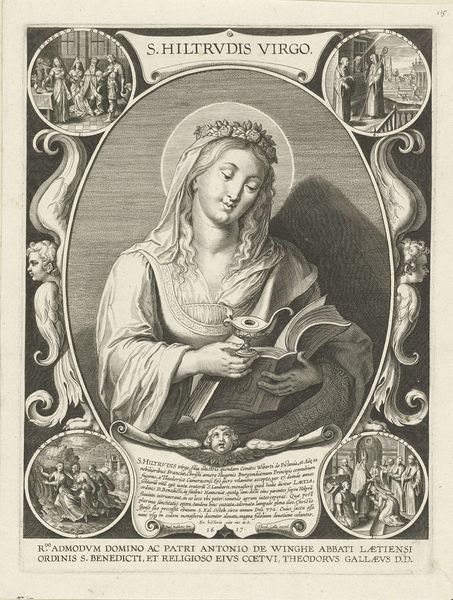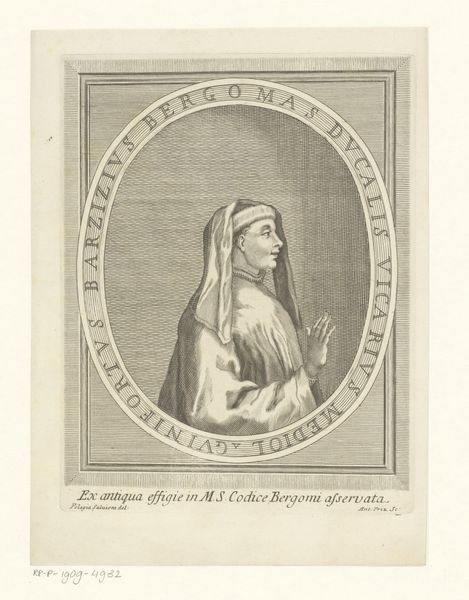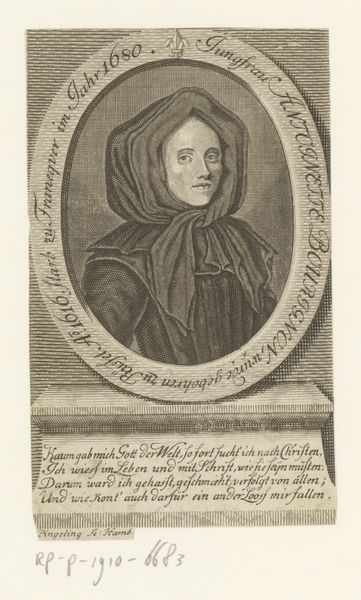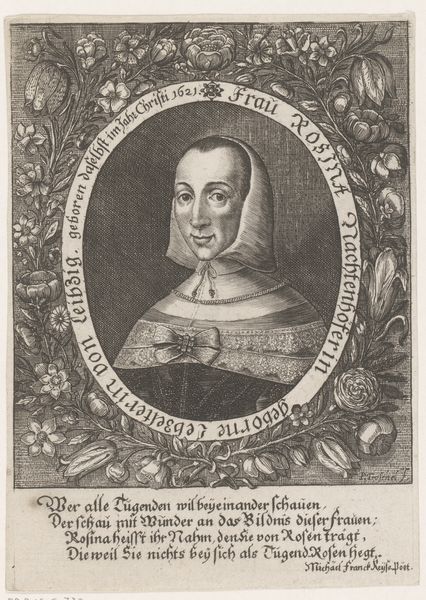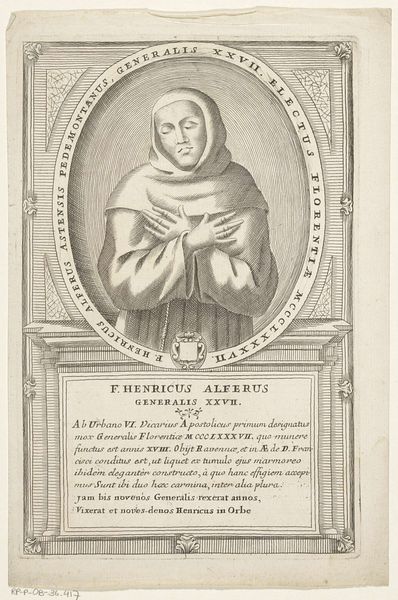
print, engraving
#
portrait
# print
#
old engraving style
#
11_renaissance
#
history-painting
#
engraving
Dimensions: height 157 mm, width 125 mm
Copyright: Rijks Museum: Open Domain
This portrait of Sultana Donice was made by Theodor de Bry sometime in the late 16th century, using the technique of engraving. Look closely, and you can see the characteristic crisp lines that this process makes possible. To create an image like this, a metal plate, usually copper, is covered with a waxy ground. The artist then uses a tool called a burin to cut lines through the ground, exposing the metal. The plate is then submerged in acid, which bites into the exposed lines, creating grooves. Ink is applied to the plate, filling the grooves, and the surface is wiped clean. Finally, the plate is pressed onto paper, transferring the ink and creating the print. The resulting image, with its fine lines and delicate shading, speaks to the skill of the artist. But it also reveals the social context in which it was made. Engravings like this were often used to disseminate information and ideas, making them an important part of the visual culture of the time. By understanding the materials and processes used to create this print, we can gain a deeper appreciation for its artistic and historical significance.
Comments
No comments
Be the first to comment and join the conversation on the ultimate creative platform.
